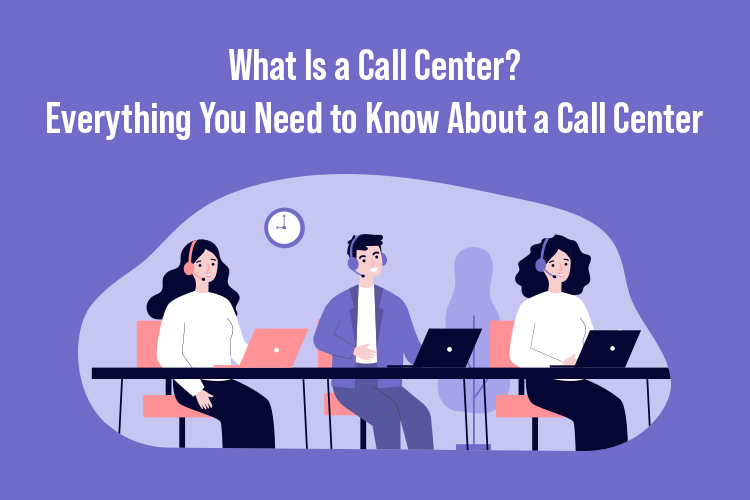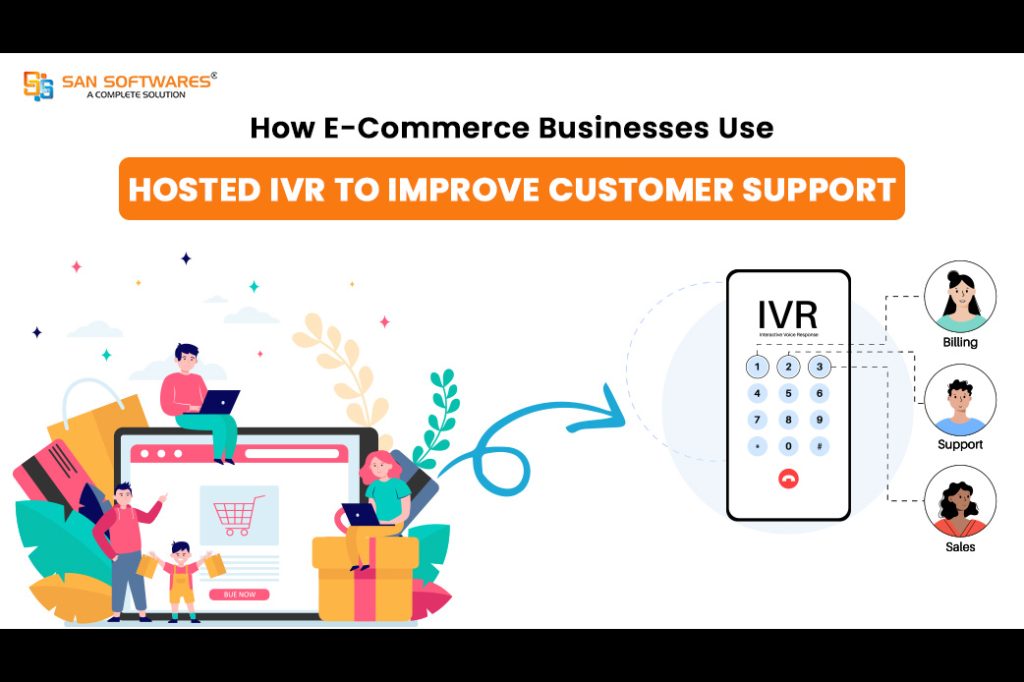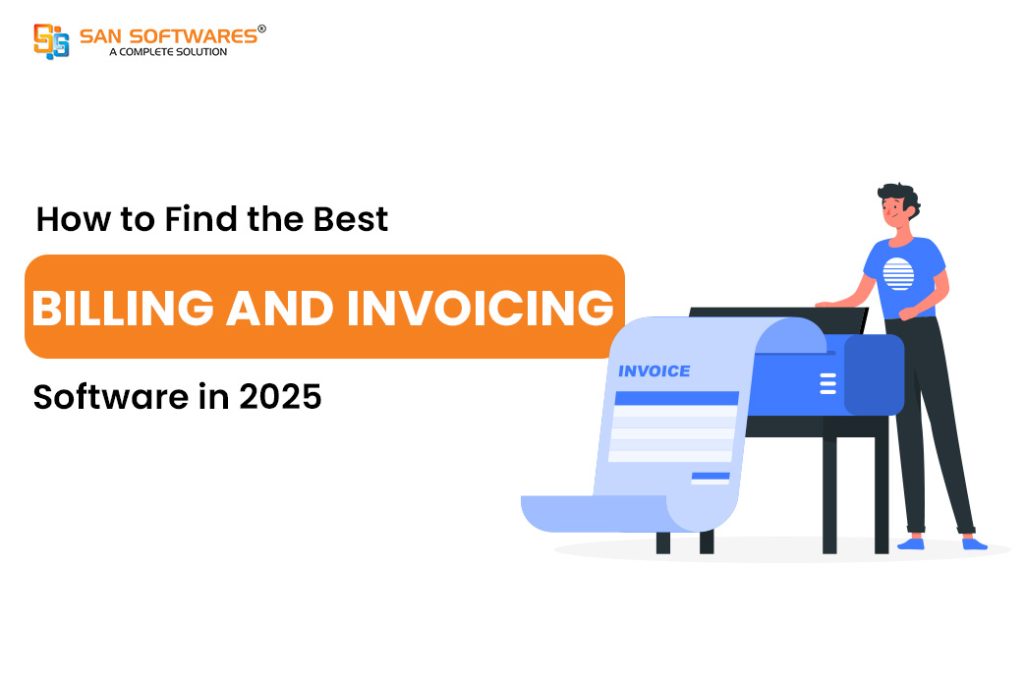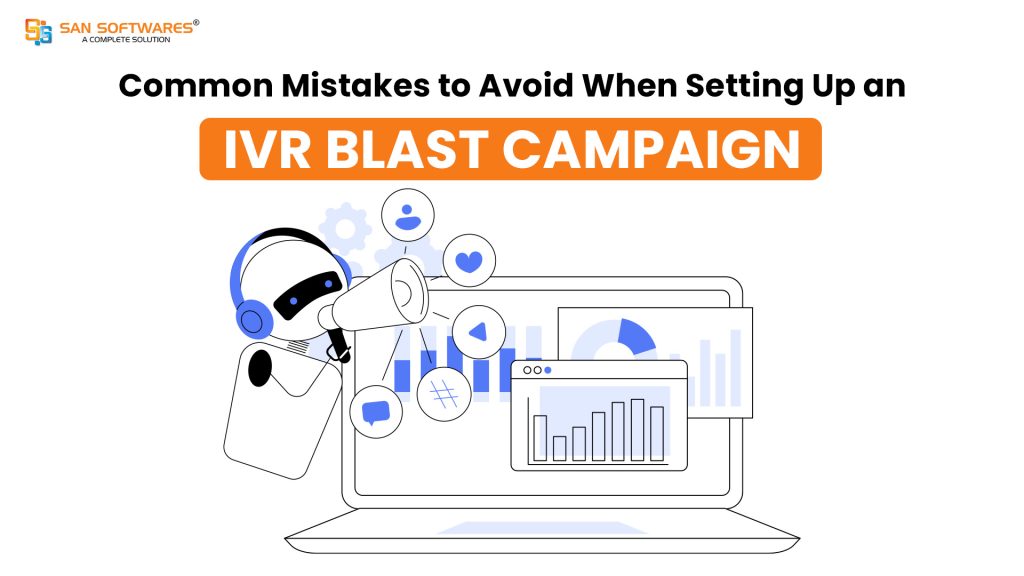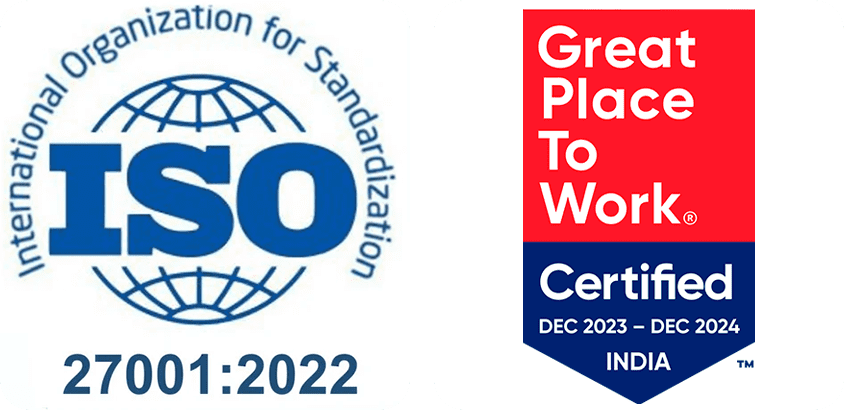How do call centers work?
Generally, Call centers are used by telemarketing companies, online merchants, mail-order organizations, help desks, charities, polling services, and any large organization that sells products or provides services over the phone. These businesses also use call centers to improve customer service experience.
Inbound, outbound, and blended call centers are the three most common types of call centers.
Inbound call center: Inbound call center. Usually, these call centers handle a large number of calls simultaneously and then screen, forward, and log the calls. In this kind of call center, an interactive voice response (IVR) system is essential. It can answer calls and use speech recognition technology to respond to customer questions with an automated message. It can route calls to the appropriate call center agents or recipients via an automated call distributor (ACD).
Inbound call center agents may handle calls from current or prospective customers about account management, scheduling, technical support, complaints, questions about goods and/or services, or intent to purchase from the company.
Outbound call center: In this kind of call center, an agent conducts calls on behalf of the company or client to do activities such as generating leads, telemarketing, retaining customers, fundraising, surveys, debt collection, or appointment booking. To improve efficiency, an automatic dialer can initiate the calls and then use an IVR system to transfer them to an available agent when the caller connects. Outbound call centers must adhere to the National Do Not Call Registry, a list to which residents can register their phone numbers to avoid unsolicited solicitation calls.
Blended call center: In this type of call center, agents handle both types of calls Inbound and outbound.
What is the importance of call centers?
The value of the call centers is determined by the availability that could be provided to the client, which is 24 hours a day, seven days a week, and 365 days a year. It means, even when your firm is closed for the holidays. The primary goal is to respond to client inquiries, aid them with any problems or inconveniences, and give them the best solutions.
Companies now have a plethora of commercial departments. Clients request aid or assistance from these departments on a daily basis, mainly to inquire about services they recently got or difficulties they are having with them, among other things. Customer happiness is the goal of this service.
Because many individuals appreciate the value of call centers and their services, those in charge of certain areas may have peace of mind and security that all information is being supplied to the customer. Similarly, the customer feels certain that there will always be someone to help him as long as he requires it.
It has been proven that the adoption of Call Centers has enhanced company customer service since they are so valuable in building relationships with their clients and providing them with optimal and effective service.
In addition to delivering an excellent service to its consumers, another advantage of outsourcing these services is that the firm does not have to guarantee the employee’s income or benefits. Because the call center is in charge of this work, it is the same as having numerous people giving telephone support to their clients without raising your company’s costs and improving sales and customer satisfaction.
Types of call centers
In-house call center: In this type of call center, companies hire and manage the agents and supervisors by themselves. This is quite a bit costly and a bit hard to manage. Generally, this type of call centers is used by the companies whose client data should remain private and secure. Also, some giant organizations use this type of call centers.
Outsourced call center: The company partners with third-party call centers to take calls on its behalf, removing the constraints of employing and training call center personnel, as well as investing in and upgrading call center equipment, which can save operational expenses.
Offshore call center: It is kind of similar to the previous one. in this type of call center, The organization outsources its activities to a company in another nation, frequently to save money on employees and to provide round-the-clock support. The disadvantages of using an overseas call center include lower customer satisfaction owing to language barriers and a lack of understanding of the business, product, or service due to distance.
Virtual call center: The company utilizes geographically scattered employees who use cloud call center technologies to handle calls. Call center representatives work in smaller groups in separate workplaces or from their homes.
Call center teams and structure
The call center consists of many different types of roles, including agents, team leaders and IT personnel.
Call center agents: Because agents speak directly with consumers and manage their calls, they are the primary point of contact between a business and its customers. Agents may handle incoming or outbound calls, depending on the type of call center. Call center agents often have excellent customer service abilities, are well-versed in the company, and are creative problem solvers.
Team leaders: For better administration, many call centers divide agents into smaller groups. Team leaders assist call center agents in deescalating situations, resolving difficulties, and answering queries from consumers or agents. Furthermore, team leaders must guarantee that call center workers are pleased and fulfilled in their duties.
Call center directors: While team leaders manage smaller groups, call center directors oversee operations and ensure that everything goes well. Directors, or supervisors, establish the measurements and goals for agent performance in order to guarantee that they satisfy client expectations and keep the center functioning efficiently.
Team quality assurance team or feedback team: The primary work of a quality assurance team is to ensure that the product or the service is up to the mark and meets the requirement of the customers. Also, they listen to the call of agents to evaluate and monitor the quality of a call. Ultimately, It helps to enhance customer experience.
IT personnel: IT specialists are an essential part of call centers. These technical individuals are the only ones that ensure everything in the call center is up and running and agents’ equipment and tools are up to date in order to keep the call center working efficiently.
Technologies needed to start a call center
Well, essentially, a call center can be started with only two vital parts of technology: computers and good quality headsets.
Computer is needed to see all details and make calls, and a headset is needed to talk with the prospects. Also, many other things and technology can be added and would be needed from time to time to enhance or upgrade your call center’s productivity and efficiency.
Here are some of the crucial tools and software that would be needed to start a call center:
A call center software solution can be the lifeblood of a call center, and this helps to manage and distribute all the calls and leads among all the agents.
This type of software is pretty helpful for managers and supervisors as it helps to monitor all calls and can check whether the agents are doing good or any of them are making mistakes.
A speech analytics tool helps analyze audio recordings or live customer calls to call centers using speech recognition software to identify usable information and provide quality assurance.
- Workforce management tools
A large call center that has 50 or 100 agents to take calls. A tool that can help to manage this kind of workforce is excellent.
- Customer relationship management tool (CRM)
A CRM software could help you collect and store customer data such as user behaviour, length of time a customer has been with your company, purchase records, and notes on sales contacts. This data can be used to optimize your sales and marketing processes and improve customer service across your business.
- Interactive voice response system (IVR)
IVR, or interactive voice response, is a feature of an automated business phone system that communicates with callers and gathers information by providing them with options via a menu. It then takes action based on the caller’s responses through the telephone keypad or voice response.
An outbound dialer is a computer application or a cloud-based service that allows your great call center to make outbound calls. Outbound dialling solutions enable your agents to increase efficiency and production by expediting and automating outbound dialling.
- chatbot or virtual assistant technology
Chatbots have several advantages over call center customer service representatives. The Customer Service Chatbot’s purpose is to reduce the time between sending the customer’s inquiry and obtaining the needed response.
- Post contact survey software
This is the post-contact process in which software helps to conduct the feedback survey on whether customers are satisfied with their call center experiences.
Some best examples of call centers across industries
Call centers are helpful for any industry that interacts with the customers over the phone call. Below we have mentioned some of the most relevant industry that uses call centers for their business.
Airlines: Customers dial toll-free airline numbers to interact with IVR menus or chat with customer support representatives. Customers may check flight statuses, flight details, and frequent flyer miles balances. Flyers can also interact with customer support representatives to rebook a flight. Airlines can promptly respond to consumer requirements when weather circumstances, such as a severe winter storm, produce flight delays or cancellations.
Healthcare: Call centers in healthcare can help to schedule, change, or confirm appointments, as well as ask doctors questions. Healthcare providers can outsource their call center operation to manage emergency calls out of business hours and route them to an on-call physician.
Retail: Generally, customers need assistance before, during or after purchases. Customers may need to talk with a customer service agent while ordering or before ordering. They might need to know about shipping details or return policy. Also, customers may call an agent for a return request or report a missing item after the purchase.
How is call center success measured?
Key performance indicators (KPIs) should be tracked by organizations to assess the success rates and efficiency of call centers and agents. The KPIs may differ based on the role of the center: Among other metrics, an outbound call center may track cost per call, revenue generated, total calls made, and jobs performed. First call resolution (FCR), average wait time, and abandoned call rates are examples of inbound call center KPIs.
Furthermore, firms may utilize speech analytics software to monitor and assess the performance of call center agents. It can highlight areas where additional expertise and training are needed, which can increase call handling times and FCR.
Wrapping up
That’s it with the topic of “what is call a call center”, also we have thoroughly told you about how a full-fledged call center works. If you are also thinking of starting or implement a call center in your business, you should hosted Call Center software solution which is more reliable and secure.
 SanCCS – Call Center Software
SanCCS – Call Center Software  SanCCS Cloud – Hosted Call Center
SanCCS Cloud – Hosted Call Center  EasyGoIVR – Hosted IVR System
EasyGoIVR – Hosted IVR System  SanE-Visa – Immigration CRM
SanE-Visa – Immigration CRM  VedaERP –LMS & Accounting
VedaERP –LMS & Accounting  SanTMS – Ticket Management
SanTMS – Ticket Management  SanTrans – Transport Management
SanTrans – Transport Management  SanORDO – Order Management
SanORDO – Order Management  SanIPPBX – Office Telephony
SanIPPBX – Office Telephony TeamInspector– WhatsApp Chat Monitoring Software
 SanOBD – IVR Blasting Software
SanOBD – IVR Blasting Software  SanIVR Bot – Smart Voice Bot
SanIVR Bot – Smart Voice Bot


